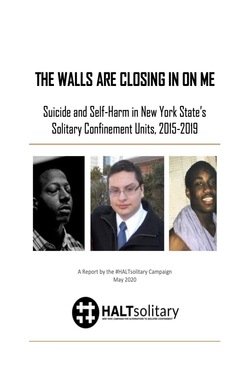By Partnership for the Public Good
Solitary confinement exacts an incalculable human toll. It also imposes heavy financial costs for New York State and localities across the state. Reducing the use of solitary confinement by enacting the Humane Alternatives to Long Term (HALT) Solitary Confinement Act1 could not only most importantly stop inhumane practices and save lives, but also save New York State and localities over $1.32 billion over 10 years. New York State is grappling with the economic devastation of the COVID-19 pandemic, while also in the midst of the largest protests against racial inequality in a generation. Meanwhile, Black and Latinx people continue to suffer disproportionately, and often fatally, from solitary confinement. As these crises converge, it is both a fiscal and moral imperative for New York State to reduce the billions of dollars spent on its incarceration system and use the savings to better fund education, housing, health care, and employment opportunities for the communities most harmed by COVID-19 and longstanding systemic racism and inequality.
New York: Partnership for the Public Good, 2020. 32p.





















